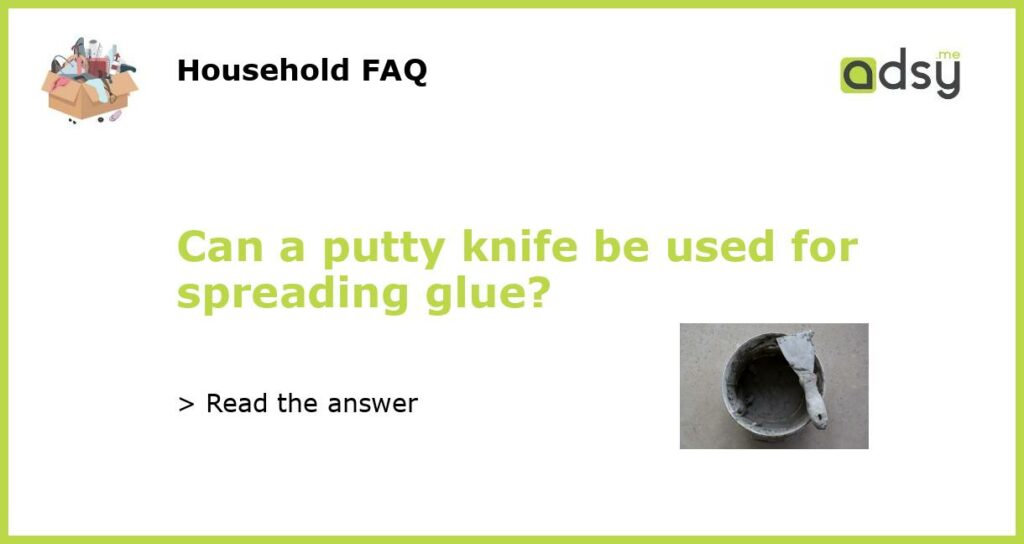Yes, a putty knife can be used for spreading glue
When it comes to working with glue, using the right tools can make a big difference in the success of your project. While there are specialized tools available for spreading glue, a putty knife can also be a useful option. In this article, we will explore how a putty knife can be used for spreading glue and discuss some tips for using it effectively.
What is a putty knife?
A putty knife is a versatile tool that is typically used for scraping and applying putty or compound to fill gaps and holes in surfaces such as wood, drywall, or metal. It consists of a narrow, flat blade made of metal or plastic, with a handle at one end. Putty knives come in various sizes, with the blade typically ranging from 1 to 4 inches in width. While putty knives are primarily designed for use with putty, they can also be used for other applications, such as spreading glue.
How to use a putty knife for spreading glue?
When using a putty knife for spreading glue, there are a few things to keep in mind to ensure successful results:
a. Choose the right size: Select a putty knife that is suitable for the size of the project and the amount of glue you need to spread. A smaller putty knife, such as a 1 or 2-inch blade, is ideal for smaller areas or precise applications, while a larger blade may be more efficient for larger surfaces.
b. Apply even pressure: When spreading glue with a putty knife, it is important to apply even pressure to achieve a uniform coverage. Holding the putty knife at a slight angle and using smooth, sweeping strokes can help distribute the glue evenly.
c. Clean the knife: Before using a putty knife for spreading glue, make sure it is clean and free of any residue from previous projects. This will prevent any unwanted contamination and ensure a smooth application.
Advantages of using a putty knife for spreading glue
There are several advantages to using a putty knife for spreading glue:
a. Versatility: A putty knife is a versatile tool that can be used for various applications, from scraping and applying putty to spreading glue. This versatility makes it a valuable addition to any toolbox.
b. Cost-effective: Putty knives are relatively inexpensive compared to specialized glue spreading tools. If you already have a putty knife, using it for spreading glue can save you money.
c. Easy to clean: Compared to some specialized glue spreaders, putty knives are easy to clean. Once you are done with the glue application, you can simply wipe off any excess glue from the blade and handle.
Tips for using a putty knife for spreading glue
To ensure the best results when using a putty knife for spreading glue, consider the following tips:
a. Use the right type of glue: Different types of glue have different viscosities and drying times. Make sure you choose a glue that is suitable for the project and follows the manufacturer’s instructions for application.
b. Practice on a scrap surface: If you are not familiar with using a putty knife for spreading glue, it may be helpful to practice on a scrap piece of material before applying the glue to your actual project. This will allow you to get a feel for the tool and adjust your technique if necessary.
c. Clean the knife promptly: Glue can dry quickly, so it is important to clean the putty knife promptly after use. Wipe off any excess glue with a clean cloth or paper towel, and if necessary, use warm soapy water to remove any stubborn residue.
Conclusion
A putty knife can indeed be used for spreading glue. While there are specialized tools available for this purpose, a putty knife can be a versatile and cost-effective alternative. By choosing the right size, applying even pressure, and keeping the knife clean, you can achieve successful results when using a putty knife for spreading glue. Remember to use the right type of glue for your project and practice on a scrap surface if necessary. With these tips in mind, a putty knife can be a handy tool for spreading glue in various DIY projects.






